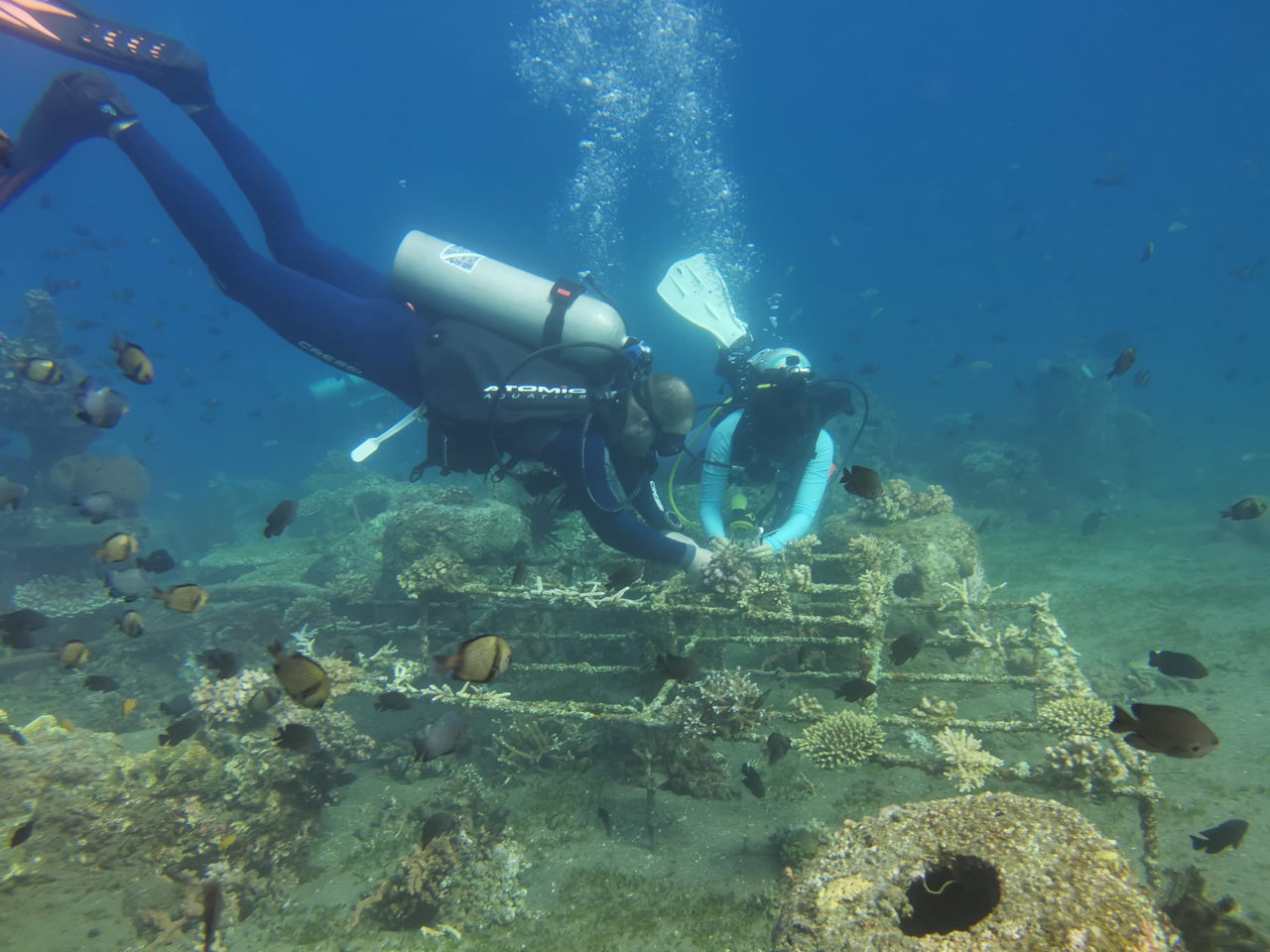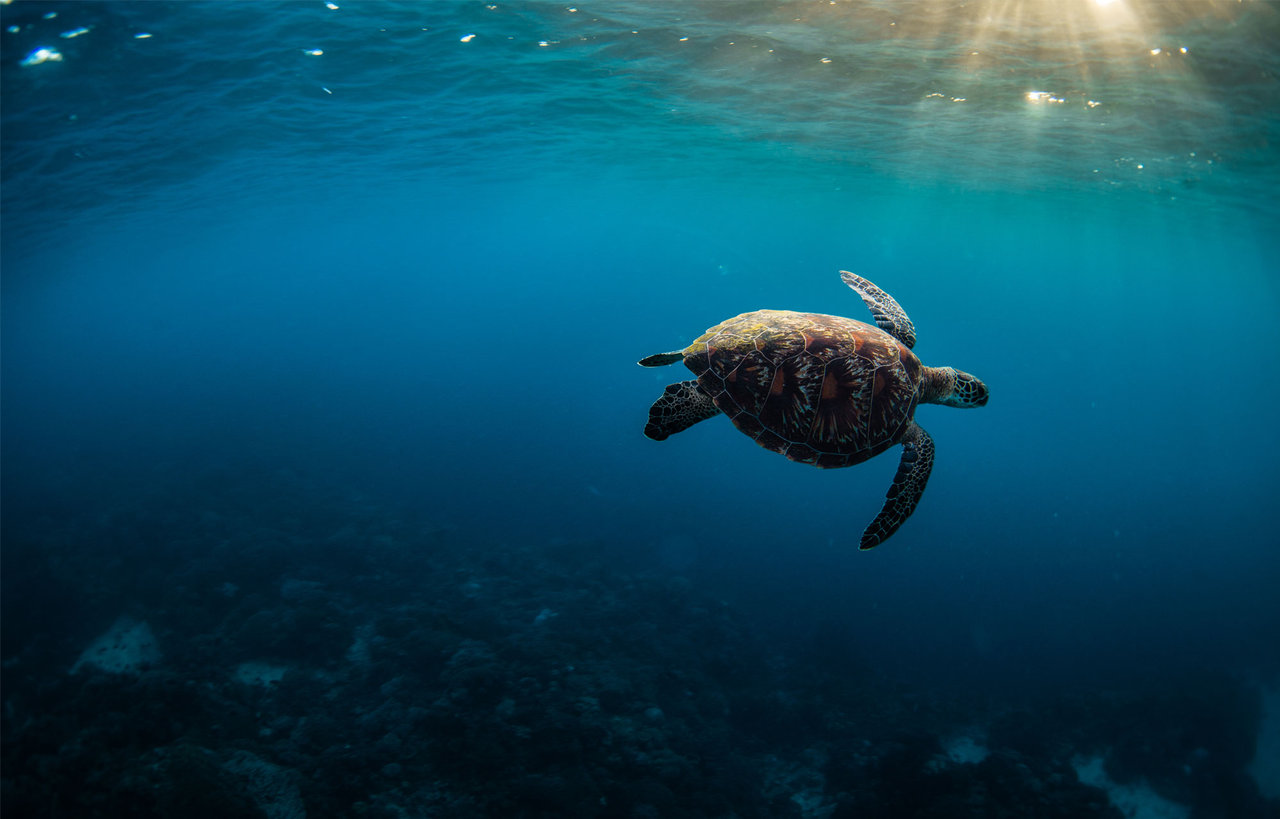To snoot or not to snoot? That is the question.
The more important question is – what is a snoot? Many of you have seen this word floating around on the internet, either with my photographs or many other photographs that are popping up on underwater photography groups, but what exactly is it, and why is using a snoot so popular?
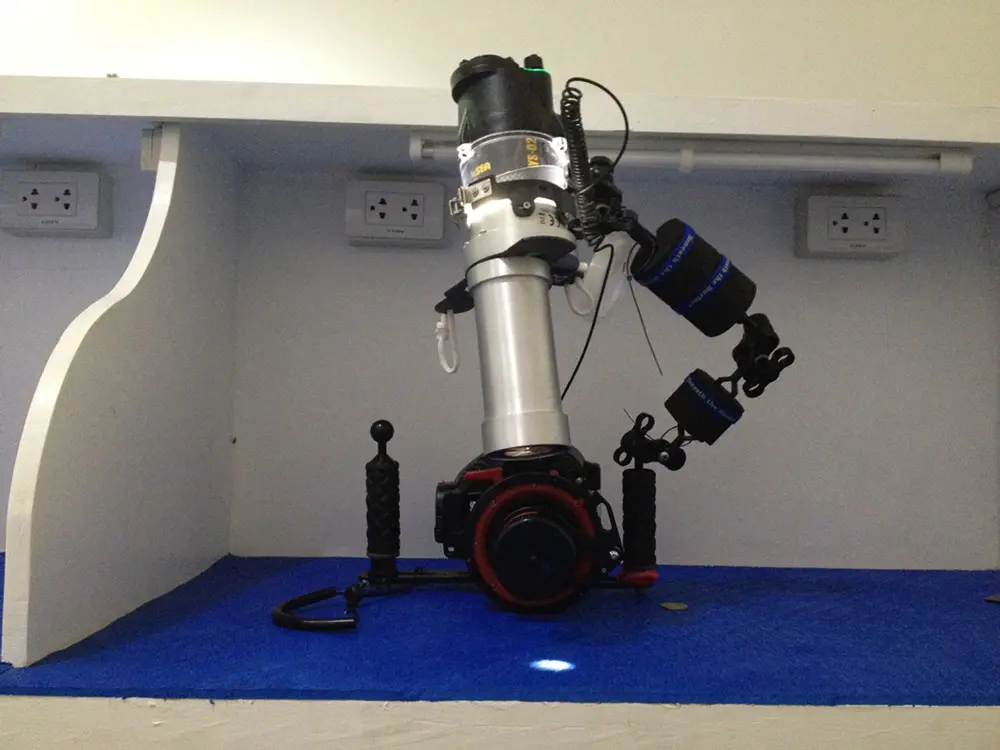
My normal camera setup with my snoot ready to go
Snoots come in many shapes and sizes. You can even make a homemade one using funnels and tubes for a few dollars. Some have bendable arms that rely on a bundle of fiber optic cables for light transmission, but one of the most popular snoots, and also the one I am currently using, is the Retra Light Shaping Device. It is a long metal tube with glass elements that has an attachment base connecting it to the strobe. Each time the strobe fires, instead of lighting up the entire photo, the light is blocked and must travel through the long tube which changes the wide beam of light into a much smaller spotlight. This snoot is exactly what it says – a light shaping device. Simply put – it changes the shape of the light that is emitted from the strobe.
This snoot also comes with four inserts that allow the photographer a wide range of creativity. Instead of simply creating a spotlight, these inserts allow you to have 6 circles of different sizes, 3 pairs of circles in different sizes, as well as 3 squares of different sizes.
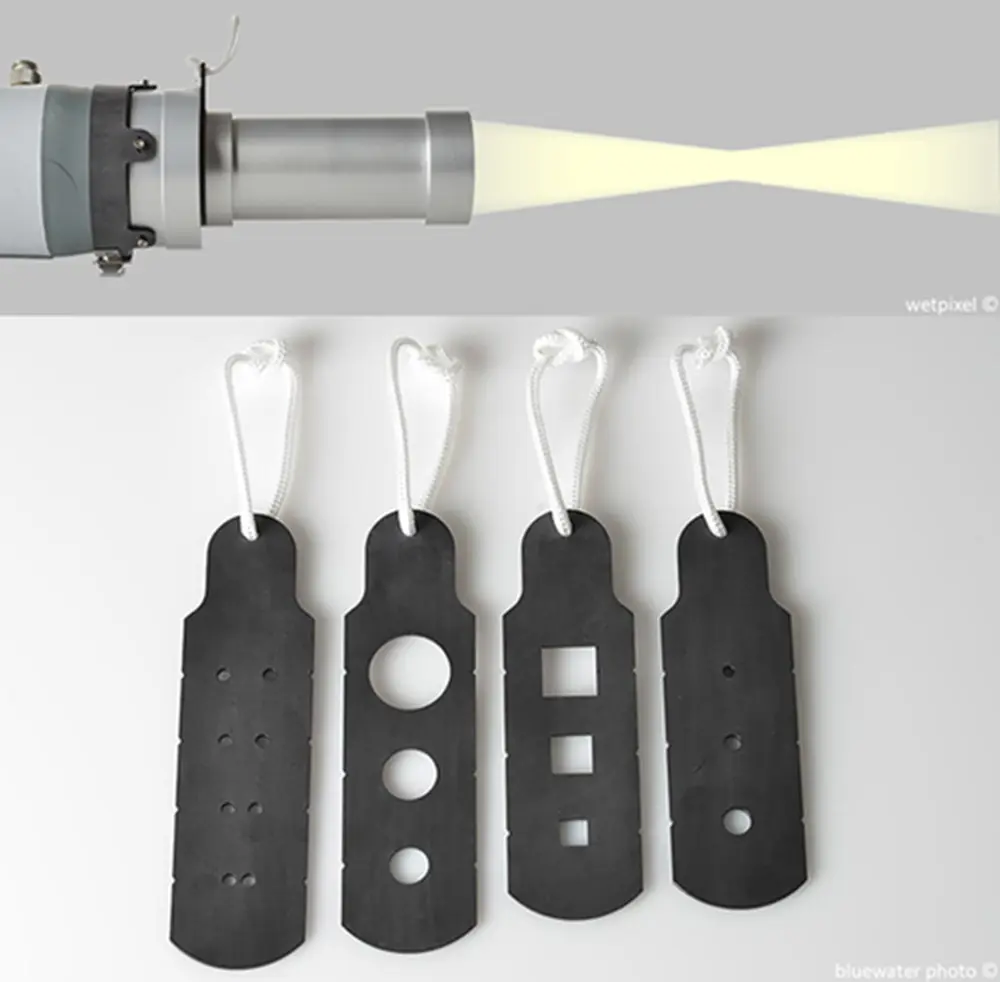
The Retra LSD changing the shape of the strobe light and the four inserts
Using the Snoot
The hardest part is using the snoot. Many people need the help of a divemaster or assistant, but I prefer to go snooting by myself. Most strobes have a weak focus light, and once this is turned on, it can normally be seen through the strobe. The focus light is hard to see if there is too much sunlight or you are too shallow, but normally it is visible. This allows me to singlehandedly use the snoot and aim it at small subjects without the help of an assistant.

By utilizing different inserts, animals of many sizes can be snooted.
Giving your subjects a stage
Why go through all this trouble just to get a photo? The answer lies in the results if the snoot is used correctly. By changing the shape of the strobe into a spotlight, and with the correct settings, anything not lit up by the spotlight is rendered black. This gives you the great effect of isolating your subject like a ballerina on a stage. This technique can be used for all kinds of reasons. Such as focusing on one whole subject to eliminate the background or focusing on one body part of an animal. The inserts that contain a pair of circles can be used to photograph both eyes of an animal. For example a flounder, and the different shapes just add a little bit of creativity and fun.
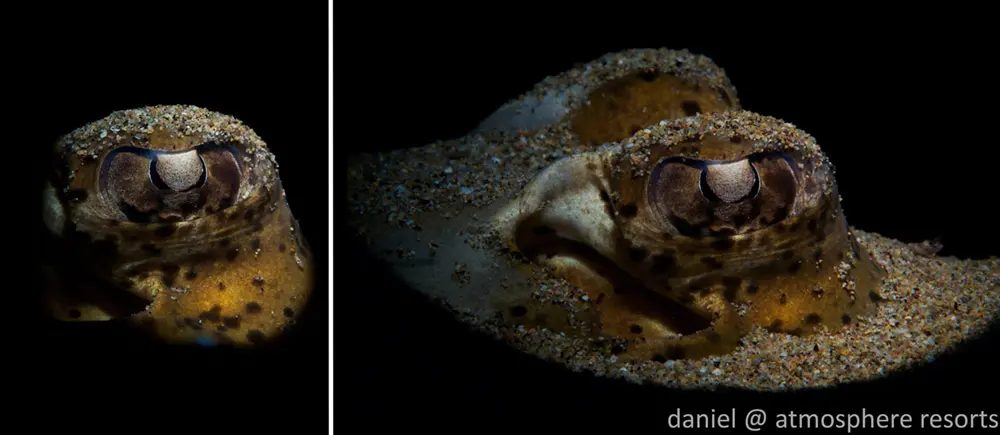
The same stingray using two different insert sizes
Using a snoot is a great way to boost your portfolio. It is also very good for photographing those “boring” animals you see everyday. I tend to use the snoot on anything small that is not moving. Or I will snoot the eye of an animal if I can’t fit the whole body in the frame, such as giant frogfish or stingray. My snoot comes with small attachments so I can clip it to my BCD, with the inserts as well. In case I feel like photographing without it. Although not everything is snootable, having one on a dive is a valuable piece of equipment if you want to get some stunning, unique shots of everyday animals.
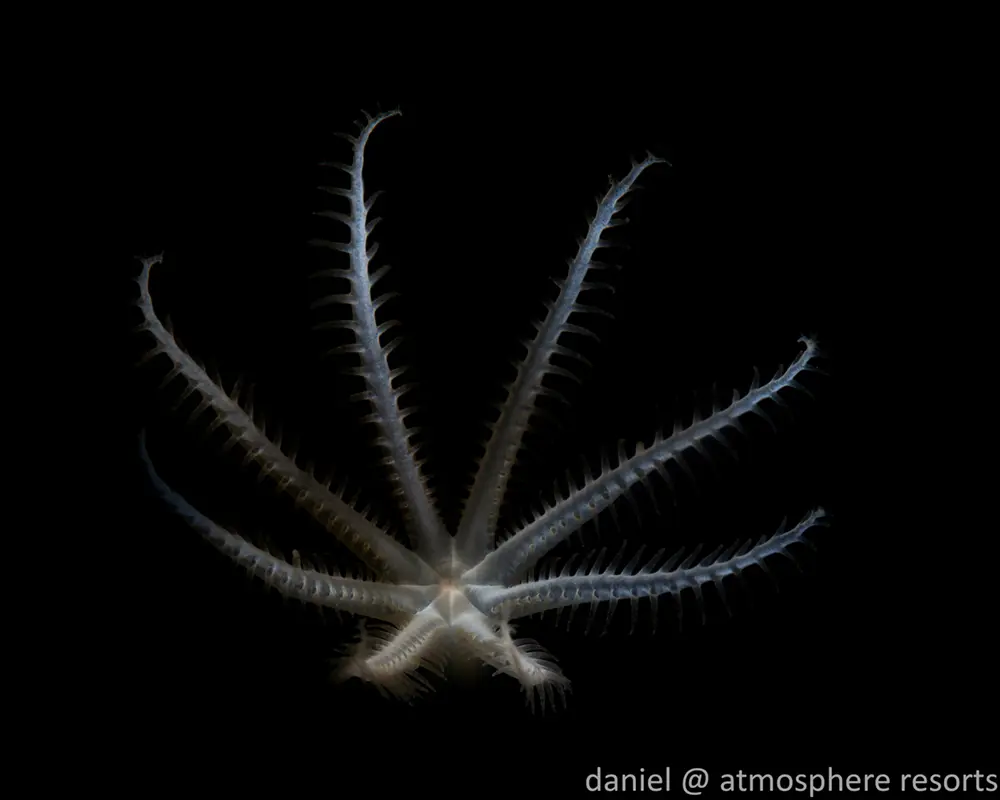
Snooting a pulsating coral, an “everyday” animal, can instantly make it special


